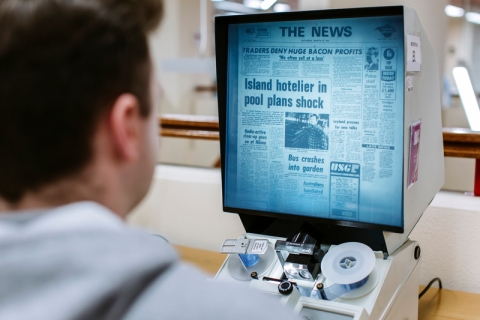

It’s not all doom and gloom!
We’ve seen social media put to good use over the past week, with the clapping of our key workers during the Coronavirus outbreak.
A national call was made and this circulated online. People and businesses joined together to share images and videos of their tributes.
This is a good example of the multiplying effect, especially at a time when we are more isolated from others. We're fortunate to have instant messaging to spread joy and appreciation in this way.
Much of the content we use online is safe, helpful or can just make us laugh. Use your own judgement when engaging with information online and consider the multiplier effect before you share it.
The multiplying effect
Fake news has been around forever. But our ability to like, share and retweet things so easily online makes this a modern day issue.
We should be better prepared to spot fake news, but also think about the impacts of sharing fake news. There are steps we can take to be more responsible with the information we read and share online.
That's because every like, share or retweet has a multiplying effect. This means more and more people will see that meme, video or article.
How to spot fake news and share responsibly
1. Be social media savvy
Is seeing believing? It’s ok to be a little sceptical, it prompts us to look for evidence. If something looks or feels too good to be true, maybe it is. Images and videos can look convincing, but many search engine sites will let you do a reverse image search to find the original source.2. Read the article
Don’t just skim the headline and click share. It’s often pretty easy to spot fake news by looking at the language used. Ask yourself if it make sense. If it's full of spelling errors or poor grammar, then it might be fake news.3. Think like a journalist
Check the facts and the sources. See if there are any first-hand accounts, or if the content is being repeated by other trusted sources.4. Take a closer look at the accounts
If they excessively share content, but don’t generate their own stories – this could be a bot or algorithm. Check the date of the story or article as bots often re-post old and out of date information.5. Over encouragement to share
Be careful if messages pressure you to share. This is how viral messaging works.6. Take responsibility for managing misinformation
Take a second to consider the points above before sharing or retweeting. Do you trust the source of the information or could you be fuelling a rumour or unqualified advice?And if you want more tips, BBC Bitesize has some more advice on spotting fake news.
What is fake news?
A report by the National Literacy Trust, found that half of young people in the UK are worried about not being able to spot fake news.
Put simply, fake news is news that isn’t true. It’s been made up or the facts have been changed, sometimes just for fun and sometimes to try and change your opinion.
Right now, you might be concerned about exams being cancelled or your next steps. So, it’s important to be able to spot fake news when you’re searching for help and advice about these things.
What’s the big deal?
Not everything we read or see online is fake. But we all have a role to play in how we use and share information online. It’s important we understand the impact that misinformation can have on people.
It's sometimes harmless, such as using an inspirational quote to a picture of the wrong person. But misinformation can also be damaging to reputation or mental and physical well being.
Take the Coronavirus pandemic for example. News articles, photos and people’s opinions were published, shared and re-shared rapidly across social media. It had an immediate impact on people’s behaviours – from panic buying toilet roll to xenophobia and racism.
Misleading information can create confusion about how we should be keeping safe. It can be harmful too, as credible government and scientific advice gets lost. Fact check information about Coronavirus using the government’s updated website.
